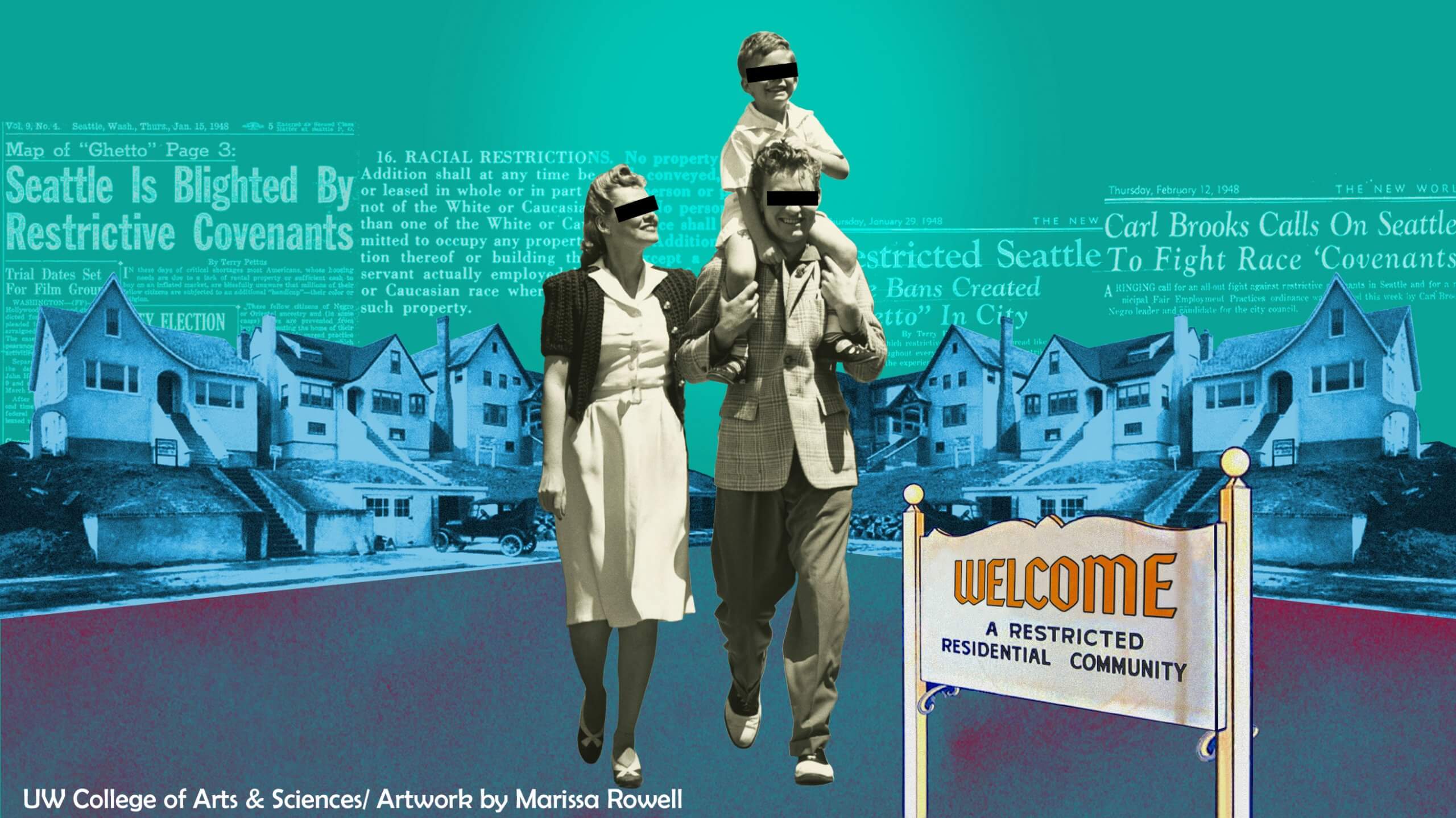On April 23, 2023, the Washington state legislature passed the Covenants Homeownership Act (CHA), pioneering legislation that will provide compensation to victims of the racist restrictive covenants that destroyed opportunities for generations of Black, Asian, Latinx, and Indigenous families. Historians have been working in dozens of locations to document the extent and impact of racial restrictive covenants, finding them in thousands of neighborhoods and showing that they have a close connection to today’s disparate rates of homeownership and wealth.
Now the state of Washington is taking action to compensate the victims, and doing so with a law designed to survive court challenges that might scuttle reparations or programs that are overtly race based.
Instruments of law
Racial restrictive covenants were legal instruments that developers or owners recorded with county authorities to bar certain populations from buying, renting, or occupying property in designated neighborhoods. They were binding in perpetuity. Future owners could face costly penalties if they rented or sold to the wrong party. Some covenants said, “Whites only.” Others specified banned populations which sometimes included Jews and Middle Easterners along with anyone perceived to be Black, Asian, “Indian” or “Mexican.” In the Seattle area, one subdivision developer specified “Aryans only.”

Covenants were widely implemented in the decades from 1910s through 1960s, promoted by the American Board of Realtors in cities and suburbs across the country. Although they became void with the passage of the 1968 Fair Housing Act, millions of covenants remain embedded in property records and continue to shape housing inequality.
Redlining and restrictive covenants worked together to destroy property rights for generations of BIPOC families. Redlining maps were created by the Home Owners’ Loan Corporation (HOLC) in 1936 to show banks and mortgage lenders where it was supposedly risky to make housing loans. Covenanted neighborhoods received high ratings while areas where nonwhites or other minorities lived were redlined as “hazardous” to lenders. The Federal Housing Authority (FHA) then joined other lenders in refusing loans in redlined areas. From 1934 until 1962 less than two percent of FHA loans went to families of color.

It is sometimes wrongly assumed that restrictive covenants became illegal in 1948 with the Shelley v. Kraemer decision in which the Supreme Court declared that a racist covenant was a private contract that lacked standing in a court of law because enforcement by a state government would violate the equal protection clause of the 14th Amendment.
But the ruling did not make covenants illegal and had little impact. After 1948, race discrimination remained perfectly lawful and White neighborhoods continued to enforce covenants by other means. Indeed, segregation worsened over the next twenty years. For example, the Washington Supreme Court issued rulings in 1960 and 1961 affirming the legal “right of segregation”.



Legacies
Racial restrictive covenants maintained much of their threat even after they became void in 1968. Many neighborhoods that had been restricted as a matter of law have kept that reputation decades and now generations later. Biased “steering” by realtors, discriminatory behavior by parties selling or renting properties, stares and snubs by neighbors have continued to block open access through the years.
Another legacy is perhaps more important. Today’s extreme disparities in homeownership and family wealth have everything to do with covenants. Property restrictions not only determined where people could live, they limited access to any kind of home ownership for most people of color. Squeezed into certain areas, potential buyers were then hammered by redlining practices and denied access to mortgages.
Civil rights laws beginning with the Fair Housing Act of 1968 came too late. Housing price escalation in recent decades has meant that families with modest incomes who missed the golden age of mass homeownership (1940-1970) when low-interest FHA and GI-bill loans expanded homeownership for White families, have been locked out. Today, nationwide, only 45% of Black families are homeowners while 73% of White families own homes. In Washington state, homeownership rates for African Americans have declined in recent decades as prices have soared. Currently only 31% of Black families own a home. In Seattle/King County where prices have rocketed out of sight, only 27% of Black families are homeowners.
Law making
The Covenants Homeownership Act is based on research begun almost 20 years ago at the University of Washington when Trevor Griffey and I launched the online Seattle Civil Rights & Labor History Project, hoping to combat public ignorance about those issues in our region. Soon after, we began researching and publishing lists and maps of restrictive covenants, first numbering in the hundreds, later in the thousands.
In 2021, the initiative, renamed the Racial Restrictive Covenants Project – Washington State, received a big boost when the legislature voted to authorize and fund a statewide inventory of racist restrictions. More than 50,000 restricted parcels have been identified so far, with many more still to be found. Similar projects are underway in Minneapolis, St. Louis, Chicago, Washington D.C., and many other locations, most led historians and community organizations.
Research is one thing. More impressive is the coalition of community groups and progressive law makers who wrote the new law and powered it through the legislature. It was thrilling to watch the brilliant work of that coalition in mobilizing support throughout the state. More than 2,000 people signed up to testify as the bill moved through hearings.
The Covenants Homeownership Account Act provides compensation in the form of substantial mortgage assistance to victims and their descendants. It was written with a view to overcoming legal challenges that might derail programs that are overtly race based.
Instead, this law is “harm based.” It establishes that the government caused financial harm by authorizing and enforcing racial restrictive covenants: “The state government was both an active and passive participant in this discrimination.” Then it establishes a very substantial remedy (roughly $100 million per year) to provide interest-free mortgage loans to thousands of families excluded from equal housing opportunities in the years prior to the 1968 Fair Housing Act.
Applicants must be first-time homebuyers with incomes at or below the area median. They must have been a Washington resident before 1968 or a descendant of someone who was. The details remain to be worked out, but because restrictive covenants usually specified “whites only,” it is likely that all Black, Asian, Indigenous, and Latinx families who meet the residency and other criteria will be eligible for a no-interest free loan.
And the size and number of compensation awards will be substantial. Funding will come from a $100 Covenant Homeownership recording fee that will apply to all real estate transactions. The logic of this is that owners selling properties have benefitted from the wealth building opportunities that have been a biproduct of homeownership; opportunities denied to most families of color.
This fee is going to raise a lot of money, enough, according to one estimate, to enable 2,000 to 4,000 loans in the $25,000-50,000 range each year.
These numbers may start to reverse the race disparities in homeownership. Moreover, the legislation should become a model for other states.
Labor historians rarely get to enjoy a moment like this, a moment when you see historical research turn into something truly consequential, into a policy that is going to change the lives of thousands, a policy that takes history and justice seriously. Sweet.
Note: This is a revised version of “A new law addresses the harm done by decades of racist housing practices,” Washington Post, May 10, 2023.







